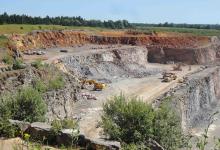Detailing how drone technology can make something faster, cheaper or safer in one or multiple ways is a major topic of discussion, says Jeremiah Karpowicz writing on Commercial UAV News website.
[caption id="attachment_86523" align="alignright" width="501"] Drone technology has changed the paradigm around how information is captured and utilized[/caption]
Drone technology has changed the paradigm around how information is captured and utilized[/caption]
'Being able to do so allows an organization to quantify the value of the technology, and for many, that value is associated with being able to get company-wide insights into inventories and products. It’s the reason some have referred to data as the new oil, and drones are able to capture that data in a powerful way. What does the process to do so actually look like though?
For some, it means building a drone program, and the ability to create an internal program of this sort has clear advantages. However, it’s not a model that works for everyone, which means some companies will need to outsource those services. Some might have doubts about the economic viability of that model, but one company is looking to prove how it can and does make sense.
"Stockpile Reports recently announced they are offering one company the opportunity to perform inventory counts at 100 locations every month at an exclusive price point, which includes them flying the drones. It’s an offer that David Boardman, chief executive, Stockpile Reports, believes can and will work because of how these economics work at scale.
“I think the whole notion of building out your own flight operations for an enterprise is going to make a lot of sense for some companies,” Boardman told Commercial UAV News.” For other companies though, it will just prove to be too burdensome to try and do that at scale. If you start adding up the costs of buying drones and getting people with their licenses and paying people to fly, the math starts to get big real fast. Leveraging drone service providers is going to bring an interesting dynamic to the conversation for enterprises.”
That dynamic is related to the increased frequency that data can be gathered by drones. How does doing so change someone’s business now that they can start to make day-to-day production and delivery decisions based off of this data? That answer can have a major impact on the bottom line, and it’s related to the offer Stockpile Reports has made. Their goal is to showcase how this technology can and will change some fundamental expectations and approaches.
“The business we’re in starts with inventory management, and that’s not something anybody really wants to do,” Boardman explained. “It’s kind of like doing your time card. It’s a pain and you don’t want to spend any time thinking about it. That’s where inventory has lived for a long time. But the reality is that as our customers now are starting to do it more and more frequently, it’s becoming more of a production tool. And it’s something that lets someone run their day-to-day business more efficiently as you get into monthly and even weekly measurements.”
That transition means inventory management is set to have a far more direct relationship with production management, since the data will be that much more relevant and useful. It will mean that these numbers aren’t a passive assessment, but an active consideration. For many, the measurement of stockpiles was an inventory activity that had to be done for administrative purposes. Better and more accurate information means it can be an activity that means so much more.
Drone technology has changed the paradigm around how information is captured and can be utilized. That process isn’t going to look the same for everyone, but the team at Stockpile Reports is ready to explore what it can look like for a company that is read to perform inventory counts at 100 locations every month. It’s a journey Stockpile Reports is ready to take with the right company.
“I really love working with companies where the business initiatives are driven from a financial perspective and people are looking at things like how they can increase their delivery area by three miles,” Boardman said. “We’re looking for anyone who has ever thought about how they might be able to get company wide insights into their inventories and products, but could never figure out how that would be possible.”'





